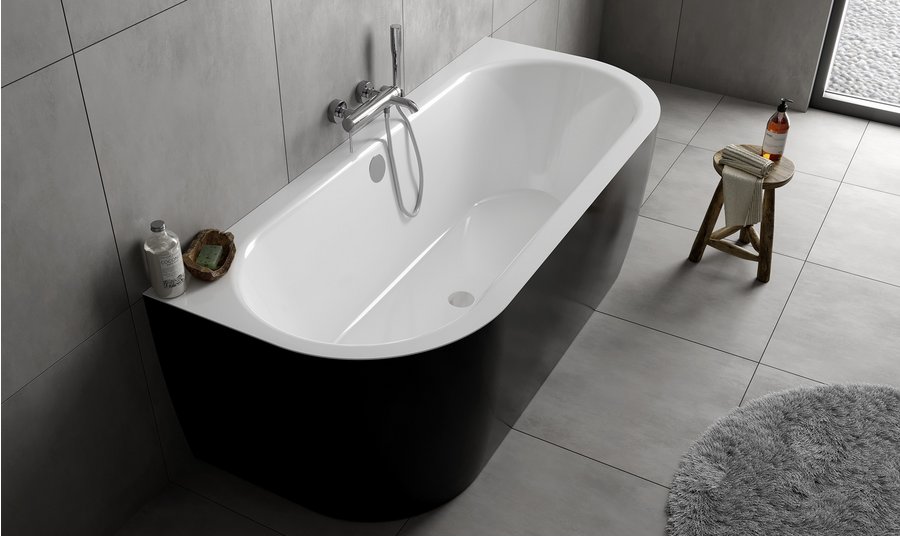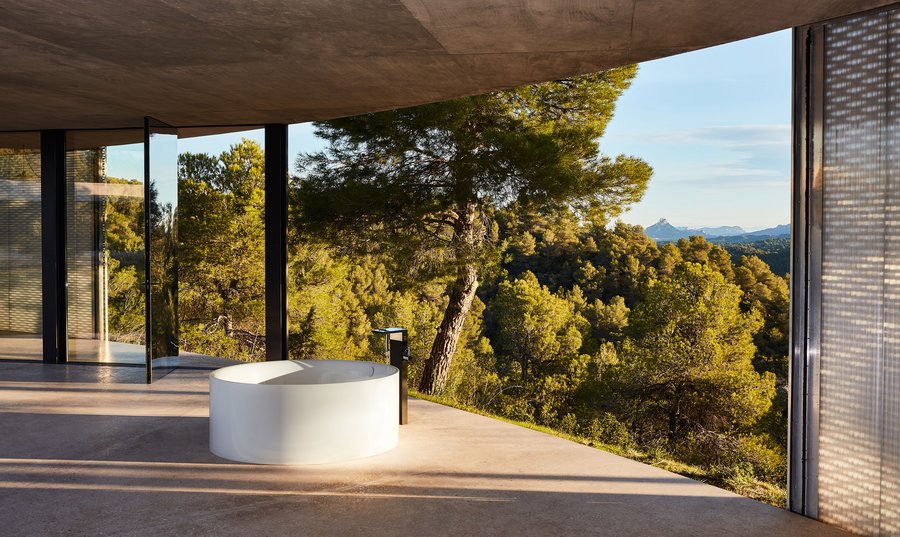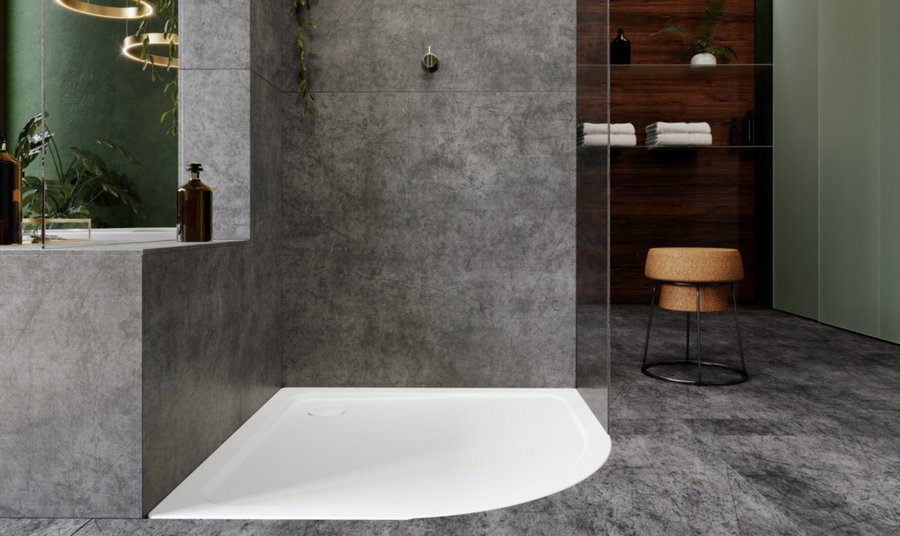Ahead of the curve: bathroom design embraces the circle

Soft, round shapes are enjoying increasing popularity in the bathroom.
Photo: burgbad - Background: Karsten Jipp, German Bathroom Sector Association
The
strictly geometric circle is conquering the bathroom: no other element has
influenced its design so much in recent years as the arc. From 45 to 360 degrees, anything goes – as long as it’s minimalist.
Luigi Colani, the inventor of bathroom collections, put it in a
nutshell: “Why are there so many corners and edges in the bathroom? When we
spend time there, we’re often naked and therefore vulnerable. So
shouldn’t the bathroom be warm, soft and rounded?”
That’s precisely the question a growing number of bathroom planners are
asking themselves – and why they’re increasingly using “soft” forms to equip
new bathrooms. But curved shapes add something new to the
bathroom at visual level too. Rounded forms for things like bathroom
furniture or tubs make the room as a whole seem bigger, and round surfaces like
mirrors or washbasins create the impression of open spaces.
The quadrant: the answer to the dictate of the right angle
The latest bathroom furniture illustrates the new enthusiasm for
quadrants particularly clearly. Bathroom furniture with striking,
rounded vertical edges and classically curved fronts creates a salon-like feel:
among the highlights of Burgbad’s new Lavo 2.0 collection, for instance, are a
vanity unit like a dresser, elegant consoles and sideboards, big illuminated
display cabinets and impressive highboards. Gently rounded furniture fronts
harmonise with the oval of the mineral cast washbasin and illuminated mirror and
give the bathroom a cosy character. The simplicity of the overall effect
is the result of impressive manufacturing expertise – producing, painting and
coating the rounded edges of the thermoformed fronts is particularly complex
when they’re destined for use in the bathroom.
But bathroom furniture, which is a very dominant element of the overall
design, isn’t the only product category where the design language of the arc is
manifesting itself. The rounded look of soft-edge design is also
showing up in mirrors, accessories, fittings, bathtubs and toilets.
Perfect, infinite, round: bathroom mirrors
Round mirrors and the bathroom are the new love
story in bathroom design. Washbasin, furniture and mirror create a
perfect symbiosis of form. True, creative users who prioritise harmony
over functionality have to pay for this geometric aesthetic by accepting that
they can’t have everything when it comes to storage space, lighting and smart
technology. But those who are willing to make such compromises will be rewarded with
all-round satisfaction and an aesthetically pleasing combination on what is
probably the most important wall in the bathroom. Because the wall with the washbasin
often marks the user’s “line of sight”, it serves as the main stage on which
the design of the bathroom plays out. In combination with decorative tiles
or even the patterned wallpapers that are trending right now, round mirrors
create a tasteful eye-catcher. And combining several round mirrors, which can
even be suspended from the ceiling in small groups, creates the impression of
what’s known as a “salon-style hanging” – with the added bonus that the mirrors
make the room seem bigger.
Visual highlights in the bathroom: a round tub and washbasin
A circular bathtub may well be the most spectacular statement of all in
bathroom design. The form embodies the function and is the
perfect starting point for a private spa. Because the circular freestanding
tub isn’t made for pushing into a corner – it has to be the centre of
attention. The circle is the most perfect and balanced form in geometry. It stands
for harmony, for infinity and for oneness. It’s also the form Dominik Tesseraux
chose for BettePond – as a reminder of the wooden tubs of yesteryear, which
were likewise round.
Circular shapes are also very popular for countertop, inset and pedestal
washbasins right now. Like little works of art, they sit on top of
consoles or pillars and enhance the bathroom with the atmosphere of a cultural
and inspirational haven.
Visual storytelling: accessories and decorative items echo the “round” theme
For
bathroom planners and stylists, the idea of “roundness” is an inspiration for
visual storytelling – and there’s no shortage of decorative elements and motifs
for them to choose from. Soap dishes, towel holders, lighting, hanging
shelves, framed wall shelves, toilet roll holders, racks, containers, trays,
make-up mirrors and utensil holders can be used to echo the “round” theme and
put the finishing touches to the permanently installed sanitaryware by
providing additional functions and decorative extras.
Ahead of the curve – translating tradition into today
The strictly geometric form of the circle is a perfect fit with the
tastes that shape the minimalist bathroom and adds a little more emotion than
the usual boxy shapes. That’s all it takes to give the understated
ambience a gentle push in the direction of the “warm minimalism” trend that is
so popular again right now – regardless of whether that means Scandi chic with
lots of wood, a more purist industrial style or a combination featuring a
simple sideboard in matt dark blue or glossy black. Emphatically traditional style references
are also very much on trend right now, although translated into a modern,
understated design language that often relies on simplifying playful
forms and reducing them to their basic geometry – with the circle leading the
way. Brass or marble give the bathroom a classic look, but can also add a
thoroughly modern touch when used in the form of a simple, circular towel
holder suspended from the ceiling, a sit-on basin or side tables. And when
it’s expressed in soft edges, oval forms, asymmetric curves and softly
contoured cabinet fronts, the mid-century style can likewise turn the bathroom
into a lifestyle space without looking old-fashioned. On the contrary: when it comes to
bathroom design, traditional forms and styles look decidedly trendy when
interpreted with a contemporary twist and translated into the clear-cut
geometry of the circle.















